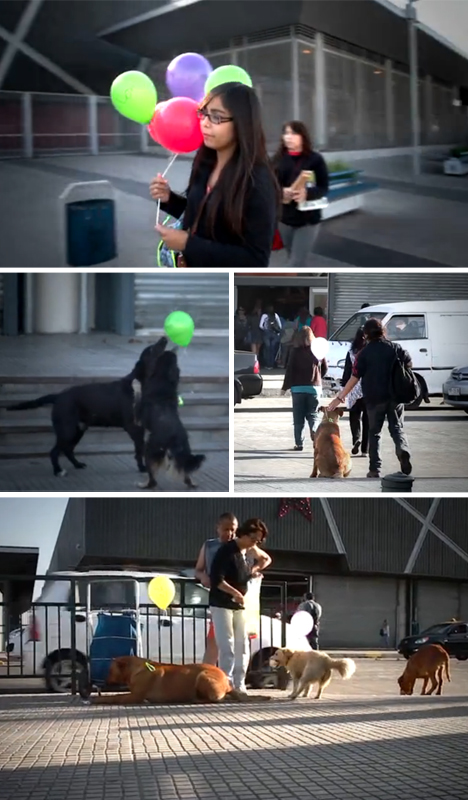The post How to Nurture and Build a Child’s Interest in Photography appeared first on Digital Photography School. It was authored by Simon Ringsmuth.
One of the most important things you can do as a photographer is to help guide, nurture, and inspire the next generation of artists. It’s a humbling experience to know that you might be the person who inspires the next Ansel Adams or Annie Leibovitz. It could come from something as simple as sharing some pictures with a young person or helping them figure out how to use their camera. You never know when you might have the opportunity to make an impression on a child, or anyone for that matter.
But if you’re not careful, these moments of creative awakening can quickly die before even given a chance to blossom. With that in mind, here are a few ways you can help and build a child’s interest in photography instead of accidentally snuffing it out.

It’s not about you
Before I get into some specifics, I want to make it clear that the important thing here is to realize that it’s not about you.
When you’re helping kids explore photography (especially this generation of digital natives), there’s going to be many times when you might be inclined to sigh, roll your eyes, or tell them that the latest filter, effect, or trend isn’t real photography. Or it’s not how you do things.
I’ve got kids in elementary school, and I also help out with my church youth group. One of the things I’ve had to come to terms with is that kids today are not learning photography how I did. My first camera was a Kodak that shot 110 film. It cost money to buy and develop each roll.
Today, like it or not, most young people get introduced to photography via mobile phones. They seem to snap away without any care for composition.
They would rather use filters, effects, and apps instead of learning about aperture, shutter, and ISO.
And that’s just wrong! It’s not real photography!

If you’ve ever shown a child how to fix things, you know it’s not about the end result but about passing on something special to the next generation. The same holds true for photography.
Or is it?
Who am I to say that a child using Instagram filters is any less worthy of creating meaningful images than me with my big chunky DSLR?
Just because mobile phones and photo apps aren’t my tools of choice it doesn’t mean other people, especially children, can’t find joy and creative outlets when using them.
There are two choices when faced with the dilemma of what to do when working with kids who are interested in photography.
You can make it about yourself and tell the kids what you think they should be doing. Show them the tools you think they should be using, and explain how to get pictures you think are interesting.
Or you can help young people find what they like. Explore photography in a way that is meaningful to them, and even (gasp!) learn to use apps and filters to create images they think are beautiful.

My wife and I were with a group of kids at the local botanic garden. One of them shot dozens of pictures of this outdoor train set.
The former can easily lead to apathy or resentment, while the latter often gives way to a whole new creative outlet for the child. It’s about them, not you. If that means you have to leave your comfort zone and explore photography in a way that makes you uncomfortable, then do it for the sake of the child and his or her learning and growth. Who knows…you might just learn something new along the way!
Give compliments instead of criticism
When a youngster invites you to look at a stream of pictures from his or her phone, you might have an initial tendency to offer unsolicited advice or, worse yet, outright criticism.
You might find yourself thinking things like:
- The lighting in that shot is all wrong.
- I don’t get it. What is this picture supposed to be about?
- Your picture is way underexposed!
- What’s with all the selfies?
If this sounds familiar, you’re not alone.
A lot of people may react similarly, but remember that children’s egos are fragile things. One word from an adult they admire or respect can be all the difference between sparking enthusiasm and causing depression.
Most of the time, when a child wants to show you their photos, what they are seeking isn’t criticism but validation. They want to know that they are doing a good job. That their efforts are worthwhile, and that they are on the right track.

The kid who took this photo thought it would be really cool to have the rope cut across the frame. I thought about telling him to shoot it differently, but instead, I just said “Nice job on those colors!” He was really really happy to hear that.
As an adult, you might think you’re helping if you offer what you think is constructive criticism, but there will be a time for that later. The most helpful thing you can do is offer compliments and words of encouragement. Even if you don’t find their photos entirely compelling, find something nice to say.
Try tactics such as:
- That’s a really interesting lighting choice!
- I like the colors in this photo.
- Can you tell me how you got this shot?
- Look at those fun selfie filters you’re using! Can you show me how to do that?
Give children compliments instead of criticism, and ask questions to show them you are interested. It sends a strong message that you care about their creativity and value their work. This could help set them on a lifelong photography journey, and you might be just the person to do it!

Shot by a seven-year-old who thought this dinosaur was really fun to look at. Fun enough to take over two dozen photos of it.
Encourage experimentation
As someone who grew up with analog cameras and physical rolls of film, there’s a lot about modern photography I don’t quite understand. This goes double when it comes to mobile phones. Especially with filters, effects, stickers, and other image-altering features found in a lot of photo apps.
But for kids today, these types of alterations are just enjoyable ways to explore photography. Just because I, and others my age, didn’t grow up with all this technology doesn’t mean we should spoil it for the next generation!

One of my young relatives loves playing with color-inversion filters. I think the results look awful, but he loves this picture that he shot and others like it. And if he likes it, then who am I to tell him otherwise?
Instead of dwelling on what we might not comprehend, try the opposite approach when dealing with budding photographers. Don’t run away from filters if you’re with kids who are excited about them, and instead get them to try even more.
Some might seem silly, and you might never choose to willingly give yourself cat’s ears or apply an over-saturated look to your nature shots, but there’s no harm in trying things like this when you’re with a child who wants to experiment for fun.

My son took this picture of me sharpening a lawnmower blade. He used a night-time mode which, as he discovered, made the shutter stay open longer and capture some spark trails.
You can also encourage kids to try new techniques like time-lapse photography, look at accessories like the OlloClip which lets you take macro shots with a mobile phone, and experiment with basic editing and image processing. Photography today, especially with mobile devices, allows creative possibilities light years beyond what we had when I was a youngster.
Just imagine what kids can create with a few encouraging words from an adult photographer whom they admire and respect!

Another one of my young relatives was really interested in shooting familiar objects from different perspectives. This was the result of one of his recent experiments, and while it won’t win any awards, he was thrilled to try something new. I happily encouraged his experimentation.
Give advice, but only if they ask for it
This is one of the hardest but most important parts of helping a young person nurture their interest in photography. To illustrate it, I’ll share an example from a visit with my out-of-town family.
My 14-year-old niece is constantly snapping pictures with her phone of anything that she thinks is interesting: insects, flowers, fences, cars, and, of course, her friends. During their stay, she bombarded me with requests to look at her pictures. She couldn’t wait to show me the photos she took even just out in the backyard.
While this happened, it was difficult for me to hold my tongue and just let my niece bask in the glow of her newfound love for photography. I wanted to give her advice about lighting, offer tips about composition, show her how to hold her phone at different angles to get better pictures, and so on. However, I held my tongue and just tried to be a voice of encouragement and validation, telling her I liked her pictures and asking if I could see more.

My niece loves taking pictures such as this one using portrait mode on her phone. I wanted to tell her she could get better results with a real camera. But that kind of attitude is toxic and hurtful for a child who just wants to experiment with photography.
What my niece (and most young people) aren’t looking for are instruction and advice. They’re seeking validation, often on a personal level, that their work is good and that they are pursuing worthwhile goals. When you, someone whom they respect and admire, can only tell them why their work isn’t good or instruct them on how to fix what they are doing, it sends the wrong message even if you have good intentions. You could inadvertently stifle the very sense of creativity you are hoping to inspire.
What you should do instead is play the long game. Use opportunities like this to build a sense of trust and goodwill. That way, when young people do want you to help them with their photography, they will ask you.
Later that same weekend, my niece asked if she could use one of my cameras. So I let her use my old Nikon D7100.
We talked about lenses, apertures, and how to control the camera to make the background get all blurry. Then we went out to take pictures of flowers as the sun was setting. She was eager to learn all about how to control the camera settings to get photos she could never pull off with her cell phone and some filters.

When she showed interest in some of my camera gear, I let her try it out and gave her some advice about composition, lighting and controlling the aperture. But only after she asked me for help.
After putting her photos into Lightroom, I showed her how to do some basic cropping and adjustments. She told me repeatedly that these were some of her favorite shots she had ever taken. If I had started the weekend by chastising her for not using a real camera, or told her what I thought she should be doing differently with her photography, she would probably not have wanted to go out and get flower photos later on.

This is the result of her efforts, and she was extremely pleased with the results. Hopefully, this is just the start of a lifelong photographic journey!
Conclusion
Young people are finicky, and their moods and tastes change as quickly as the wind. Today their interest may be in photography, and by next week they have moved on to archery, pottery, or guitar. You never know what’s going to stick with them in the long run.
If you want to nurture an interest in photography and help make sure it’s not just a passing phase, you have to be careful what you say and do. Make it about them and not about you. Hopefully the photography seeds you help plant will take root in good soil to produce a lifelong appreciation for the art.

The post How to Nurture and Build a Child’s Interest in Photography appeared first on Digital Photography School. It was authored by Simon Ringsmuth.

Digital Photography School















































You must be logged in to post a comment.